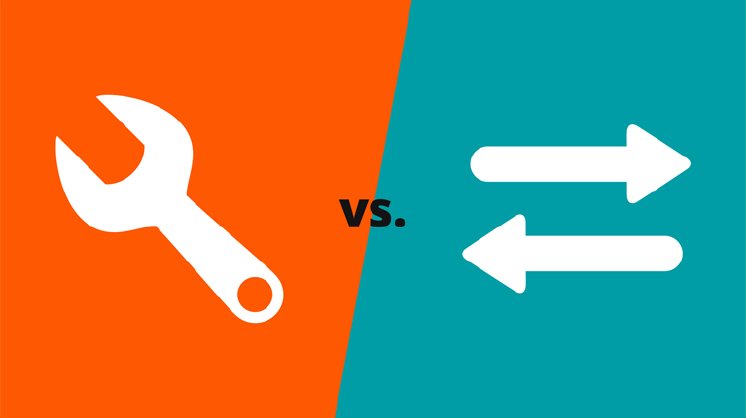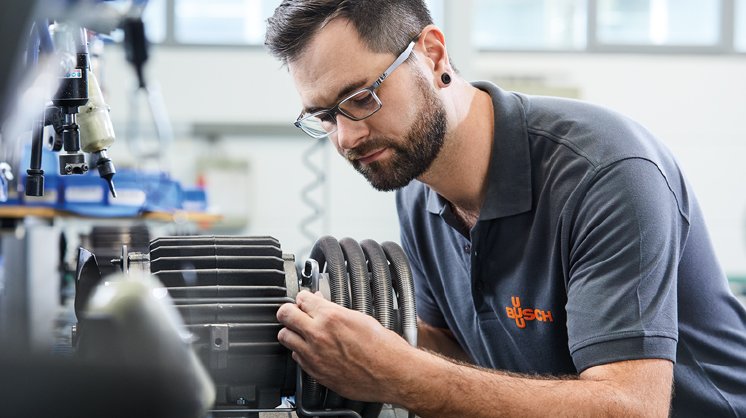The basics
Whatever the path of action, the decision to repair or replace always begins with testing and diagnosis. A factory-trained service technician who specializes in vacuum pump services inspects the equipment and identifies the problem.
Repair
If your vacuum pump can be repaired, faulty components are removed and replaced, and the equipment is returned to manufacturer specifications.
Pros
- Cost effective: If the issue is minor, or the vacuum pump is relatively new, there may only be a few spare parts to replace.
- Low environmental impact: Fewer resources are used, and less waste is produced.
- Potential for higher costs in the long term: If the vacuum pump’s issues are difficult to repair, they may crop up again.
- Fixes only one specific problem: Vacuum pump repair doesn’t guarantee that other, different problems won’t arise in the future.
If you opt to replace your vacuum pump, the existing one will be removed and a brand new pump will be installed.
Pros
- Higher reliability: New vacuum pumps have entirely new components and may be more energy efficient.
- New warranty: A new unit comes with a new warranty, offering peace of mind, and potentially reducing future repair costs.
- Higher upfront costs: Purchasing a new vacuum pump means higher initial costs.
- Longer installation time: Installing and integrating a new vacuum pump usually takes longer than to carry out a small repair.
Before you make a decision for vacuum pump repair or replacement, there are five criteria to assess.
1) Costs
If your existing vacuum pump has only a minor issue, repair may be the more economical option. However, you should also consider longer-term maintenance and repair costs. As a vacuum pump gets older, for example, it may require more frequent servicing. This could add up to more than the price of a replacement over time, even though this will require a much larger immediate outlay.
2) Process requirements
Evaluate whether your existing vacuum pump is still the best option for your process. If your vacuum pump is always running flat-out, or reserve pumps are regularly coming online to meet demand, the process may have outgrown the pump’s current capabilities. Replacement could therefore be a sensible option. This will help avoid production delays and ensure you maintain optimal quality and performance.
3) Service history
Has this same problem occurred before? Examine the service history to be sure. Regular maintenance actions like replacing spare parts such as seals, gaskets, or vanes is usually nothing to be concerned about, but if larger issues keep cropping up, repairs may no longer be an option.
4) Energy efficiency
Many new generations of vacuum pumps are more energy efficient than the one before. You should therefore consider the benefit of replacing your current vacuum pump with one that consumes less energy. Depending on the difference in consumption between your current vacuum pump and the newest technology, your energy bills could sink considerably. And your carbon footprint too.
5) Technical features
Consider how state-of-the-art your current vacuum pump is. Do more modern vacuum pumps come with new technical features that could benefit your process? This could be the right time to invest. You could also look into retrofitting. Some features can be added to an existing vacuum pump – an ECOTORQUE variable speed drive or OTTO digital services for intelligent monitoring of your vacuum pump. This allows you to upgrade without investing in a full new system.
However, if your pump is getting older, it may no longer be compatible with these newer features that have become available since its purchase. As a result, your process could miss out on some optimization possibilities. You should therefore consider how important this option is to you and your process. This could sway your decision between repair or replacement.
Diagnosing and troubleshooting common issues
Vacuum pumps rarely fail with no warning. However, it can be hard to catch the early symptoms of a problem. Regular maintenance is the first step: A problem spotted early is generally easier to repair. It is also helpful to familiarize yourself with common issues and the telltale signs of a failing vacuum pump:
- excessive noise or vibrations
- leaks
- reduced pumping speed
- overheating
Real-world example: weighing repair vs. replacement
In a food packaging plant, the performance of the vacuum pump is critical for the quality and shelf-life of the foodstuffs. However, a vacuum pump was experiencing increased noise and reduced pumping speed, leading to production delays.
After careful inspection, the technician from the vacuum pump repair service provider determined that the problem was the result of a leak. The vacuum pump had been in operation for several years, but this was the first time the issue had occurred. And, although the initial symptoms looked troubling, it was a simple fix. Vacuum pump repair was therefore the most sensible option. The service technician replaced the worn seal, and the vacuum pump was back up and running.
Conclusion
When your vacuum pump isn’t running as it should be, you should carefully weigh your options. Consult the experts from vacuum pump repair service providers and have them conduct a proper inspection and diagnosis. You should also assess efficiency, performance, and the cost of repairs – both now and in the future – versus the cost of a new vacuum pump. This will help you determine the best course of action. Ultimately, your decision should be based on what is most cost-effective and beneficial for your production process.
These criteria can be tricky to assess by yourself, so Busch will be happy to assist. Our specialists will visit you on site, evaluate your current equipment and give you a recommendation on how to move forward. Whatever you decide, we will be there to carry out any necessary repairs, or provide you with a suitable replacement. For even more peace of mind, let us take care of your maintenance with service contracts, intelligent IoT solutions, and 24/7 remote condition monitoring. With 60 years of experience in the world of vacuum, you can be sure your vacuum supply is in good hands. Contact us to discuss the details and restore your vacuum equipment to its optimum performance.



